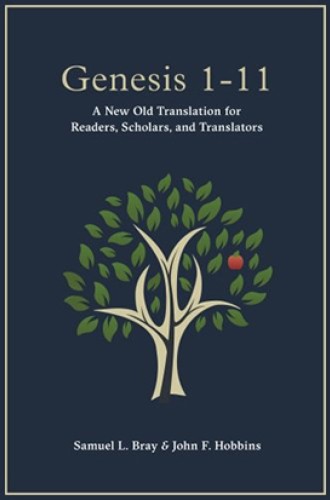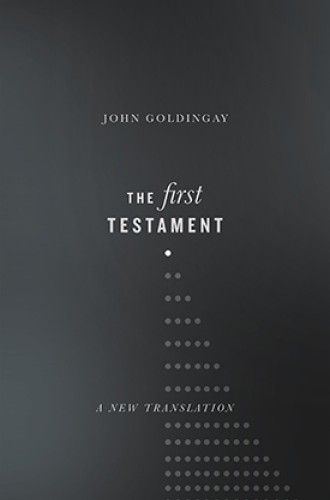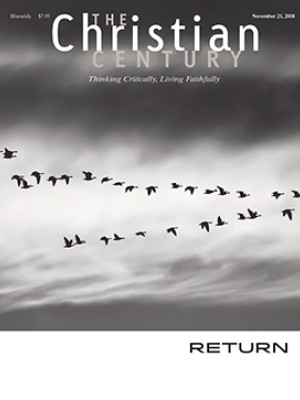Lonely, on the run from the papal henchmen, and chagrined at being out of the public eye, Martin Luther holed up in Wartburg Castle and began translating: “Am Anfang schuf Gott Himmel und Erde” (Gen. 1:1). The shock, the heated controversy, was that there was a translation, any translation, for the people. But Luther wasn’t the first. John Wycliffe had preceded him, publishing the Bible in English, striving to correct ecclesiastical abuse. His bones were exhumed and then burned for his efforts, only a slightly happier fate than that of fellow translator William Tyndale, who wound up strangled and burned before burial.
For a long time, church folk were content with (and even adamant about) having just one English Bible, the King James Version. Now there are—how many? Of the making of many translations, there is no end, Qoheleth might say if he were around today.
Read our latest issue or browse back issues.
Over the years, I have reviewed several translations in these pages. These two new ones could not be more different from one another in style, results, packaging, purpose, and intended use. Samuel Bray, a professor of law, and John Hobbins, a pastor and scholar, provide a lovely rendering of Genesis 1–11. They also provide much more, as the actual translation of the text fills only 19 of the book’s 326 pages. Their introduction is a wise and eloquent reflection on the art of translation and what is at stake in approaching it. Their extensive notes not only explain why they translated the way they did but also function as a fairly profound commentary on the text itself.
A few samples reveal the fruit of their strategy. For Genesis 1:26, they unabashedly stick with “Let us make man in our image” in the face of valiant efforts by the NRSV and CEB to wriggle out of the gender quandary with “Let us make humankind” or “humanity.” Their rationale isn’t flat-footed or retrogressive. Bray and Hobbins clarify that if the translator’s purpose is to flesh out ‘adam in this one context, and to unearth the most contemporary rendering possible, then “humankind” will serve us well. However,
if the aims are different—to repeat the repetitions of the text, to let the reader eavesdrop on the echoes of this verse throughout the Bible, to allow entry to a great company of readers over time—then . . . the only English rendering that passes these connections along to the reader, without affectation, is “man.”
If I’m bugged by this, I remember my Jewish friends who hear ‘adam in their synagogue readings and have to parse it out for themselves.
Bray and Hobbins everywhere exhibit a professed love for and appreciation of the old translations. I’m fond of this. It’s not as if we, now, today, finally “get” the Bible after centuries of misconstrual. They also are angling for “suitability for reading in worship.” At funerals, I watch my congregation recite Psalm 23 in the King James Version without ever looking at the words. While my parishioners never resort to 17th-century English in daily living, the deep resonance of this psalm’s words arouse some memory and hopefulness. They know the words by heart, in the sense that the words are inscribed deeply in their hearts. I worry that with a broad smattering of translations we’re losing the shared phrasings and terminology we deploy to encourage one another and profess our deepest commitments (with verses like John 3:16, Jer. 29:11, and Gal. 5:22). Bray and Hobbins feel the translator has a burden “to hold together a community of readers over time.”
While Bray and Hobbins seek (and achieve) clarity, they do not even attempt to make the text match contemporary sensibilities. They cite Michael Fox: “An honest translation should leave gender-specificity where it is. For the Israelites, Yahweh was a man of war, not a person of conflict resolution. To eliminate gender-specificity and bias from the Bible is grossly anachronistic and tidies up difficulties we should face.” Some days I concur. People must grapple with the reality that the Bible simply does not square well with the very modern and enlightened sensibilities that, curiously enough, grow from a profound and extended reading of the Bible itself.
Bray and Hobbins love and preserve “simple old words.” Biblical people “dwell and beget, . . . they do not settle and become the father of.” Clever use of italics captures puns and allusions in the original text. Noah is italicized, then so are “comfort” and “rest,” which also come from noach. Adam and Eve were “naked,” while the serpent was “shrewd”—the two forms of the Hebrew ‘arum tying the creation and temptation stories together. On this, Bray and Hobbins refer to Bill Arnold’s clever observation: “The nude humans have been duped by the shrewd serpent; they want to be shrewd, but in the end they are only nude.”
John Goldingay’s translation is very different from that of Bray and Hobbins. His name commands immediate respect and invites curiosity, given his prodigious and much admired output as a commentator. Whereas Bray and Hobbins zoom in on a narrow segment of scripture, Goldingay has taken on the First Testament (his preferred title for the first 39 books of our Bible) in its entirety. His approach? While Bray and Hobbins love the old translations, especially Tyndale, Goldingay points out in his introduction that Tyndale’s intent was to print a Bible accessible to the “boy that driveth the plough.” While working on his translation (which he reports consumed an hour of his time daily for five years!), Goldingay “had in mind people who are familiar with some standard translations but might appreciate something a bit different.”
His rendering creates the feeling that you have the good fortune of sitting next to a great scholar as you thumb through the Hebrew text together. He has not even tried to create something palatable for public worship; it’s for private or group study, “more suitable for reading on one’s own than for reading out loud.” His intent is to “stick close to the way the Hebrew works rather than paraphrasing it.” Even with personal and place names, we get the Hebrew transliteration Yerushalaim for the expected Jerusalem, Hizqiyyahu for Hezekiah, Misrayim for Egypt, and Yehudah for Judah. This convention will strike nerdy readers like myself as pretty hip, while I suspect my mother would be baffled and confused. For our Lord, not surprisingly, we get Yahweh—and you have to grin at Goldingay’s rationale: “I have accepted Yahweh’s invitation to call him by his personal name.”
His solution to the gender quandary is fascinating and appealing. While deploying inclusive terms much of the time (Gen. 1:26, “Let’s make human beings,” or Psalm 8:4, “What are people that you are mindful of them?”), he lets his translation stay gendered wherever “inclusivizing it obscures whether the text is using singular or plural.” So “he,” when it refers to an individual, is not replaced by Goldingay’s personal preference, “he or she” or “they.” Psalm 1:3, for example, says: “He is like a tree planted by channels of water.”
After absorbing Bray and Hobbins, with their in-depth remarks on their choices in translation, I found myself exasperated that Goldingay provides none at all. Of course, to do so would be unwieldy, as The First Testament already stretches to nearly a thousand phone-book type pages. We may suppose someone of his stature pretty much can say “Trust me,” or perhaps “Hey, what about this?” But I feel desperate for explanations. Instead of “walk humbly” in Micah 6:8, we get “being diffident in how you walk.” Why?
Occasionally help can be found in his laity-focused series of commentaries, The Old Testament for Everyone. For example, instead of Noah’s “ark,” Goldingay gives us “a chest of gopher wood,” which is all right until Genesis 9:18, where we find “Noah’s sons who got out of the chest were Shem, Ham and Yephet.” Had I not seen “chest” in 6:14, I might be puzzled, drifting toward picturing Noah’s sons coming from his chest in the way Eve came from Adam’s ribcage. But Goldingay’s thought process can be found in Genesis for Everyone. After a delightful reflection on “Noah found grace,” which we might read as “Grace found Noah,” Goldingay refers to the ark as a “big box” and then ties his use of “chest” to the term used for the wooden chest in Judaism that contains the Torah scrolls.
Fascinated by that foreshadowing connection, I thumbed ahead to Exodus 2:3, the only other time in scripture where the word tevah (his “chest,” our “ark” in Genesis) occurs. What did Jochebed put Moses into to float down the Nile? Goldingay has “a papyrus container.” I wish Bray and Hobbins had pressed forward into Exodus so I could see if they stuck to their determination to translate terms consistently across scripture. Would they say that she put Moses in an ark? Noah’s ship and Moses’ boat both lack rudder or sails, and both bear the hope of the future in seemingly aimless circumstances.
The First Testament feels joyful and never heavy-handed. In his introduction, Goldingay acknowledges that there are surely mistakes in his work, and he invites readers to let him know via his personal email. I tested this invitation. I recall arguing vehemently with my beloved professor Roland Murphy about Song of Songs 8:6. While I took the –yah suffix as indicating “intense flames,” Murphy was adamant that in this otherwise secular book we should read “flames of Yahweh.” I noticed that Goldingay’s “supernatural flame” leans toward the latter translation, so I emailed him to ask about it. I got a cheerful response about ten minutes later.
When we compare Goldingay’s translation with that of Bray and Hobbins, we see their inclinations clearly. Bray and Hobbins, sticking to the familiar, give us “In the beginning God created the heavens and the earth. . . . God said, ‘Let there be light.’ And there was light.” Goldingay turns it a bit and is crisper: “At the beginning of God’s creating the heavens and the earth . . . God said, ‘Light!’ and light came into being.” Bray and Hobbins, adoring their “old words,” offer “The man knew Eve his wife, and she conceived and bore Cain.” Goldingay, modernizing with one hand and archaizing with the other, gives us “Now the man slept with his woman, Havvah, she got pregnant, and she gave birth to Qayin.”
But Goldingay can catch your eye and make you rethink: “Yahweh God made a coma fall on the human being” makes a lot of sense if Adam is to survive the surgical removal of ribs (or a whole woman). And Bray and Hobbins can break away from old-timey English. I came up short when I read their Genesis 12:3, “And in you all the families of the ground be blessed,” but their commentary explains “ground” as an echo in Hebrew of the curse of the same ground after Adam’s sin. The notion that this cursed ground is about to be redeemed opened my eyes to something I had never pondered.
The comparison of stellar translations and their rationales can unearth crucial nuances. Goldingay puts these words in the mouth of Cain as he trudges toward the east in his grief: “My waywardness is too big to carry.” Bray and Hobbins, trusting Tyndale but also the connotations of the Hebrew naśa, render Genesis 4:13 as “My iniquity is too weighty to be forgiven.” What Cain (with each one of us) carries is both burden and guilt, heaviness and remorse. Their rendering nicely captures the likelihood that, as they put it, “a double sense is intended, or at least allowed by the text: Cain is saying that his sin is too great for him to bear and too great to be forgiven.”
Even something as simple as the location of breaks in the text is instructive. Goldingay separates the two creation accounts by inserting a heading between Genesis 2:3 and 2:4, “To put it another way . . .” For Bray and Hobbins, there is no break at all here. Similarly, after Genesis 2:25 (“the two of them were naked, the man and his wife, and were not ashamed”), Bray and Hobbins don’t even supply a paragraph return before the start of the serpent story in chapter 3. And after the banishment of Adam and Eve from the garden (3:24), there is no break before the Cain story begins. Why? Bray and Hobbins are diligently adhering to what they see as our oldest and best Hebrew manuscript, Codex Leningradensis, which supplies no breaks at those points. The effect isn’t odd but rather theologically provocative. The banishment from Eden logically belongs with the story of Cain and Abel. And this isn’t a clever new interpretation: it’s in Codex L! God creates a woman for the man, and their sorry conduct in the garden is in unbroken continuation with their union.
I feel certain that when I preach or teach from Genesis 1–11, I will check out what Bray and Hobbins have to say about generally traditional readings. And I will also look to Goldingay, in all of that “First Testament,” to find something a bit different. Having opened both without high expectations, I found both to be illuminating, pressing me to dig into the text a bit more carefully—which must be our shared dream in the endeavor of translation.
A version of this article appears in the print edition under the title “New words for old texts.”








